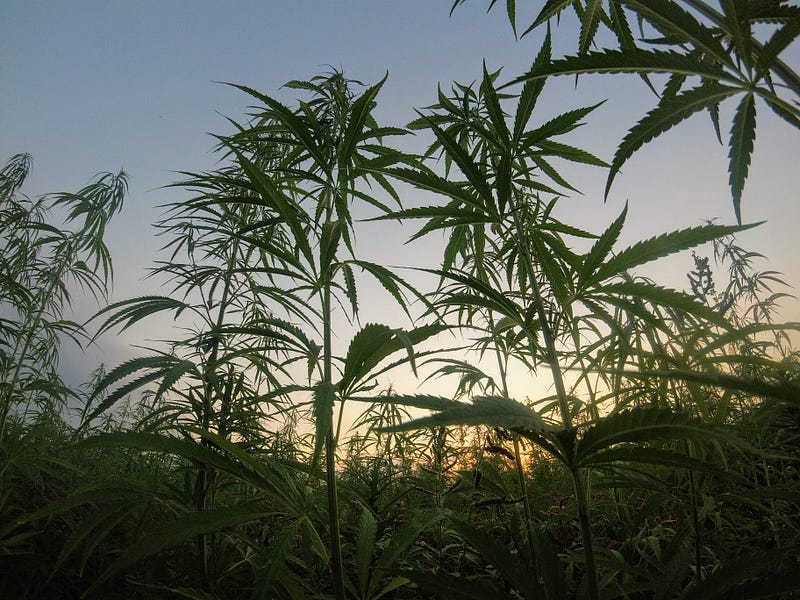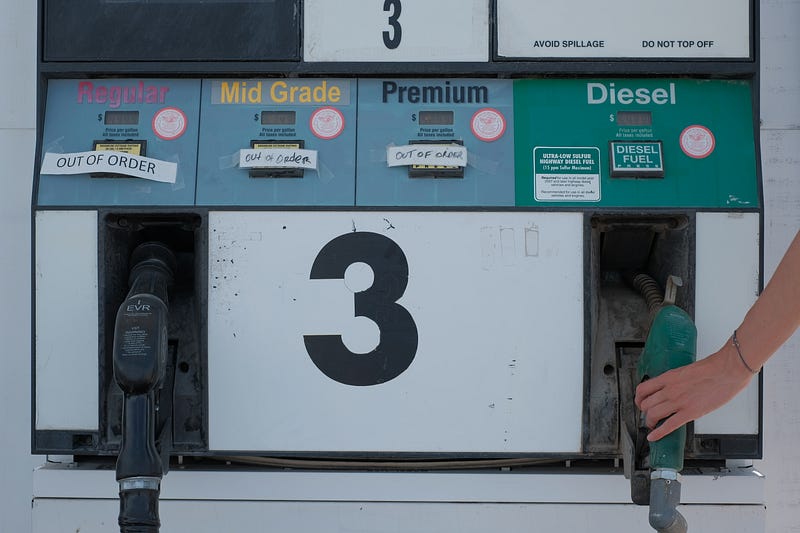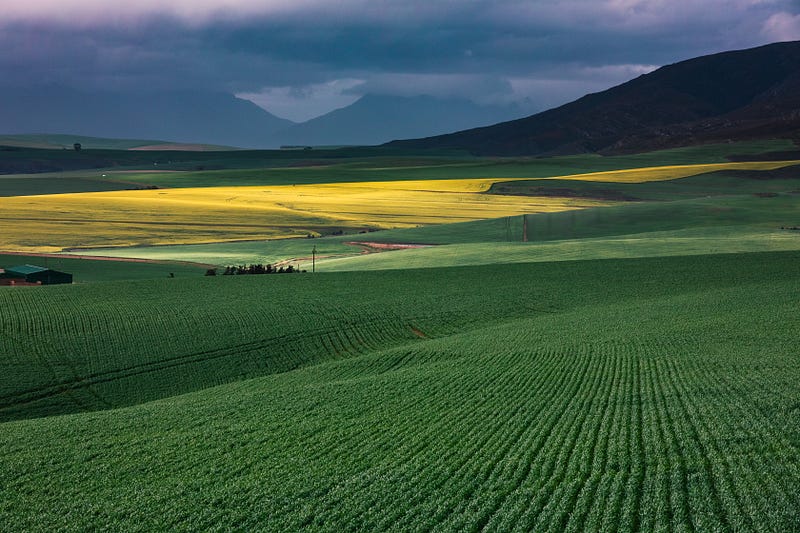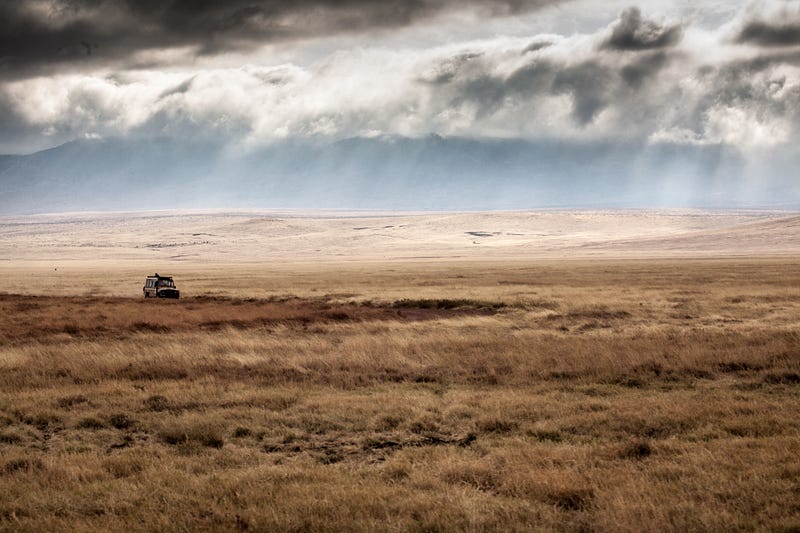# Can Cannabis Transform Our Future and Combat Climate Change?
Written on
Chapter 1: The Rise of Cannabis as a Sustainable Crop
Cannabis has increasingly become a topic of discussion in modern society, with numerous countries and states legalizing its use. This trend has led to the emergence of numerous commercial cannabis farms, revealing the plant's remarkable eco-friendly attributes. Advocates are now urging for hemp—a variety of cannabis—to replace many of our environmentally damaging industries as part of a drive towards carbon neutrality. But can this truly be achieved? Is it possible for cannabis to be the answer to our environmental challenges?
Hemp possesses three distinctive traits that position it as a highly valuable crop. Firstly, it can thrive in various climates, secondly, it grows at an astonishing rate, and thirdly, it requires very few nutrients and minimal water. Consequently, hemp can be cultivated in large quantities on small plots of land with little need for fertilizers or irrigation. Remarkably, the carbon footprint of hemp farming can be lower than the carbon it absorbs, making it a potential carbon-negative crop when managed appropriately.

Chapter 2: Diverse Applications of Hemp
However, it’s essential to have practical uses for hemp beyond mere cultivation. Fortunately, this versatile plant boasts a multitude of applications, making it a viable alternative to many harmful industries.
For instance, hemp can be transformed into food products. Hemp seed milk is available in stores and offers more protein and healthy fats than traditional plant-based milk options. Unlike almond or oat milk, hemp milk contains all essential amino acids, making it a complete protein source. Similarly, hemp oil provides an excellent source of omega-3 fatty acids, rivaling olive oil. Additionally, hemp could serve as an alternative feed for livestock, presenting a revolutionary solution to the environmental damage caused by soy farming—a crop cultivated on a massive scale globally.
The fibrous stems of hemp have historically been utilized to create rope, but modern techniques allow these fibers to be processed into a cotton substitute, significantly reducing the environmental impact associated with cotton production.

Chapter 3: Hemp in Construction and Biofuels
Moreover, hemp fibers are being repurposed into construction materials. Products such as hemp insulation, building blocks, and plasterboard are already available on the market. Traditional manufacturing of these materials is often accompanied by high CO₂ emissions; however, hemp alternatives can be produced with significantly lower emissions, while also storing carbon in the structures built with them. Utilizing hemp for construction offers a dual benefit: it both reduces CO₂ emissions and sequesters carbon.
In addition to its construction capabilities, hemp has promising applications in biofuels. Imagine a future where all modes of transportation—cars, planes, trains, and boats—run on carbon-neutral fuel derived from hemp. This plant can be converted into bioethanol, petrol, diesel, and kerosene, providing a sustainable energy source for fossil-fueled vehicles.

Chapter 4: Beyond Carbon Neutrality
Hemp’s benefits extend beyond merely reducing the carbon footprints of various industries; it also has the ability to enhance soil quality. Unlike many crops that deplete soil nutrients, hemp enriches the ground with nitrogen and carbon compounds. If left undisturbed, these nutrients remain in the soil, transforming it into a carbon reservoir. Given the alarming predictions about the future of agricultural land, hemp’s soil-rejuvenating properties might serve as a vital solution for global sustainability.
To summarize, hemp holds the potential to convert some of the world's largest polluting sectors—construction, energy, transportation, and fashion—into carbon-neutral or significantly less carbon-intensive industries. Just pause for a moment to consider the implications of this.
Quantifying collective carbon emissions can be challenging, but estimates suggest that livestock contributes approximately 1.9 billion tonnes of carbon annually, while aviation accounts for around 283 million tonnes. These sectors represent a significant portion of our overall carbon emissions, and hemp could play a pivotal role in reducing this impact.

Chapter 5: The Land Requirement for Hemp Farming
But how much land would be necessary to cultivate enough hemp? A non-ploughed hemp farm can sequester up to 4.2 tonnes of carbon per year per acre. Given that the average American generates about 16 tonnes of CO₂ annually—equating to roughly 4.5 tonnes of carbon—this means that if hemp products were integrated into everyday life, one acre of hemp could potentially offset the carbon footprint of an average American when managed effectively.
With a population of approximately 332.9 million in the United States, around 332.9 million acres of hemp cultivation would be required to fully offset the nation’s carbon footprint. This area is roughly equivalent to the size of Peru. Fortunately, the U.S. has about 300 million acres of active farmland, alongside additional dormant land that could be repurposed for hemp cultivation. If all U.S. farmers switched to growing hemp on underutilized or low-yield fields, it could lead to a completely carbon-neutral country.

However, it’s crucial to recognize that hemp cannot replace every crop, making this transition somewhat unrealistic.
Is there enough land globally to offset everyone's carbon emissions? In 2019, human activities emitted nearly 10 billion tonnes of carbon, necessitating around 10 billion acres of hemp farming to counteract this global footprint. This translates to 15.625 million square miles—an area more than twice the size of Russia or four times that of the U.S. Unfortunately, current farmland totals around 4 billion acres worldwide, which falls short of what would be required for this massive carbon offset initiative.
Nonetheless, with significant changes in consumption patterns, it may be feasible to convert around a billion acres to hemp production, leaving us with a daunting task ahead.

Chapter 6: Exploring New Frontiers in Hemp Farming
What about utilizing untouched rangelands for hemp cultivation? Although these ecosystems are essential for global health, they may be suitable for conversion into hemp farms, as they typically store less carbon than forests and have the necessary climate for hemp growth. With an estimated 6 billion acres of rangeland available, even if we converted all rangelands and a quarter of farmland, we would still find ourselves 3 billion acres short.
Interestingly, hemp could also potentially thrive in less conventional environments, such as deserts. The Sahara covers about 2.24 billion acres, while Australia's desert spans 1.7 billion acres, presenting a possibility for hemp farming on a grand scale. However, this would require extensive industrial irrigation, which could generate enough emissions to negate any benefits. Moreover, transforming deserts into farmland could disrupt global weather patterns and exacerbate climate change.

Chapter 7: The Potential of Hemp to Combat Climate Change
In conclusion, while hemp has the potential to significantly offset carbon emissions when farmed and processed correctly, and it could replace many environmentally harmful industries, the scale of human emissions is staggering. The notion that such a potent crop could require over 27% of Earth's landmass (36 billion acres) underscores the enormity of the climate crisis we face.
So, can cannabis save us? Theoretically, the answer is no, as achieving this would necessitate sacrificing vast expanses of nature, potentially leading to mass extinctions and triggering further climate issues. However, if eco-friendly hemp farming and products become mainstream, they could substantially reduce our emissions. This is an encouraging prospect. By integrating hemp into our daily lives alongside other innovative climate solutions, we could indeed make significant strides toward a sustainable future. So picture yourself in a hemp-built home, driving a hemp-fueled vehicle, wearing hemp clothing, enjoying a hemp-fed meal, and sipping on hemp milk—celebrating the remarkable potential of this versatile plant!